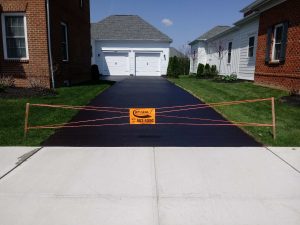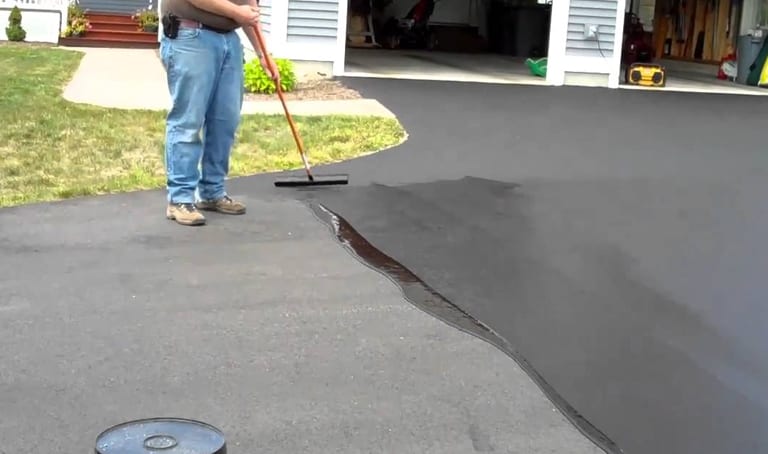Open the Keys of Asphalt Sealing: Maximizing Hot Mix Asphalt Long Life
Open the Keys of Asphalt Sealing: Maximizing Hot Mix Asphalt Long Life
Blog Article
Hot Mix Asphalt: A Lasting Service for Sidewalk
Hot Mix Asphalt (HMA) has actually emerged as a leading lasting selection for pavement remedies, supplying a myriad of environmental benefits and innovative technologies. As the need for environment-friendly building methods grows, checking out the subtleties of HMA's sustainability can give beneficial insights right into the future of sidewalk services.
Environmental Advantages of Warm Mix Asphalt

Additionally, Hot Mix Asphalt aids to mitigate city warm island results. Its dark color soaks up sunlight, reducing the quantity of warm showed back into the atmosphere contrasted to lighter-colored sidewalks. This can reduce ambient temperatures in urban locations, lowering the need for a/c and eventually reducing energy usage.
Additionally, Warm Mix Asphalt adds to improved stormwater monitoring. Its porous nature permits water to penetrate the pavement and charge groundwater materials, decreasing drainage and the danger of flooding. These environmental benefits make Hot Mix Asphalt a sustainable option for leading roadways and highways.
Energy Performance in HMA Production
Is power performance a vital consider the manufacturing of Warm Mix Asphalt (HMA)? Definitely. Power plays a significant role in the production of HMA, impacting both cost and ecological sustainability. One key facet of power performance in HMA manufacturing is making use of cozy mix asphalt (WMA) modern technologies (commercial parking lot paving). WMA permits the blending and positioning of asphalt at lower temperatures compared to traditional warm mix asphalt, causing minimized power usage during production. This procedure not only reduces gas use but additionally lowers greenhouse gas discharges, making it an extra environmentally friendly option.
Additionally, innovations in plant technologies have actually led to even more energy-efficient HMA production processes. By maximizing energy usage in HMA manufacturing, the industry can decrease its carbon impact while keeping premium sidewalk materials.
Recyclability of Hot Mix Asphalt
The recyclability of Warm Mix Asphalt (HMA) is a pivotal element of its sustainability and lasting environmental effect. HMA is among the most recycled materials in the United States, with over 100 million lots of recovered asphalt sidewalk (RAP) being recycled every year in new pavement construction. Recycling HMA supplies a number of environmental advantages, such as minimizing the need for virgin materials, lowering power usage throughout manufacturing, and lowering the quantity of waste sent out to landfills.
The process of reusing HMA includes milling the existing pavement, squashing it into smaller sized pieces, and blending it with new aggregate and asphalt binder to develop a recycled mix. This recycled mix can typically do as well as and even much better than traditional HMA, while calling for fewer raw materials and producing reduced greenhouse gas exhausts. By including RAP right into brand-new pavement projects, roadway firms can preserve natural deposits, decrease costs, and reduce the environmental footprint of roadway building and construction and maintenance tasks. On the whole, the recyclability of HMA plays a substantial function in promoting sustainable practices why not find out more within the sidewalk sector.

Long-Term Efficiency of HMA
Asphalt pavements demonstrate longevity and durability over an extended duration, reflecting the lasting efficiency of Hot Mix Asphalt (HMA) Additionally, advancements in HMA innovation, such as the use of polymer-modified binders and cozy mix asphalt, have better improved the resilience and long life of HMA sidewalks. By focusing on quality building and construction and upkeep practices, HMA proceeds to verify itself as a cost-effective and sustainable service for resilient pavement facilities.

HMA: Resilience and Sustainability
Showing both durability and sustainability, Warm Mix Asphalt (HMA) has actually become a foundation in the building and construction of lasting sidewalk facilities - hot mix asphalt. HMA's sturdiness originates from its ability check these guys out to endure hefty lots, extreme weather, and high web traffic quantities, making it a trustworthy option for roadways, freeways, and airport paths. The composition of HMA, which generally includes accumulations, binder, and filler, plays an essential role in enhancing its long life and resistance to use and tear
Additionally, HMA's sustainability hinges on its recyclability and energy-efficient manufacturing procedure. The capacity to reuse reclaimed asphalt sidewalk (RAP) in new HMA mixes reduces the need for virgin products and lessens the ecological impact of pavement building and construction and maintenance. Furthermore, the energy efficiency of creating HMA depends on its lower mixing temperatures contrasted to various other pavement materials, bring about reduced energy consumption and greenhouse gas discharges.
Verdict
In verdict, warm mix asphalt (HMA) supplies a lasting solution for pavement with its environmentally friendly qualities. HMA's recyclability, energy effectiveness in production, and long-lasting durability make it an environment-friendly choice for road building and construction. By preserving all-natural sources, lowering waste, and decreasing greenhouse gas exhausts, HMA plays a crucial role in promoting sustainability in infrastructure development. Its ability more helpful hints to mitigate urban warmth island effects further emphasizes its importance in developing eco mindful and resistant pavement systems.
HMA is one of the most recycled materials in the United States, with over 100 million bunches of recovered asphalt pavement (RAP) being recycled annually in new sidewalk construction.The process of reusing HMA entails milling the existing pavement, squashing it right into smaller pieces, and mixing it with brand-new aggregate and asphalt binder to develop a recycled mix.Asphalt sidewalks demonstrate longevity and durability over an extended duration, reflecting the long-term performance of Hot Mix Asphalt (HMA) Furthermore, advancements in HMA technology, such as the use of polymer-modified binders and warm mix asphalt, have actually even more boosted the sturdiness and long life of HMA pavements. The capacity to reuse reclaimed asphalt pavement (RAP) in brand-new HMA blends reduces the need for virgin products and reduces the ecological influence of pavement building and construction and maintenance.
Report this page